♚ 𝐅𝐫𝐨𝐦 𝐂𝐡𝐚𝐭𝐮𝐫𝐚𝐧𝐠𝐚 𝐭𝐨 𝐂𝐡𝐚𝐦𝐩𝐢𝐨𝐧𝐬: 𝐇𝐨𝐰 𝐂𝐡𝐞𝐧𝐧𝐚𝐢 𝐢𝐬 𝐁𝐮𝐢𝐥𝐝𝐢𝐧𝐠 𝐭𝐡𝐞 𝐖𝐨𝐫𝐥𝐝’𝐬 𝐅𝐮𝐭𝐮𝐫𝐞 𝐢𝐧 𝟔𝟒 𝐒𝐪𝐮𝐚𝐫𝐞𝐬
Jun 18th, 2025
The New Chess Capital of the World Is Here — and It Speaks Tamil
In a modest room in Chennai, the clatter of clocks and the quiet clinks of chess pieces echo louder than city noise. Here, a 7-year-old calculates ten moves ahead, and a teenager studies endgames like sacred scripture. It’s not a scene from a movie — it’s Madras School of Chess, a place where talent is trained, dreams are disciplined, and legends are built.
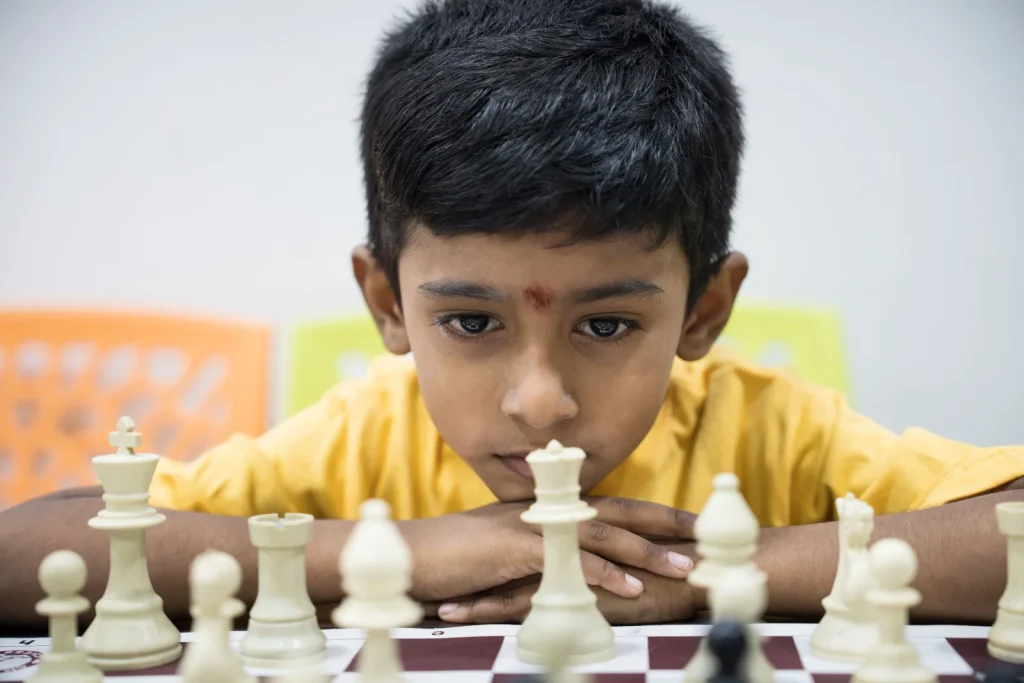
India is not just playing catch-up in the world of chess anymore. It’s rewriting the script.
And at the very heart of this renaissance is Chennai — the spiritual and now strategic capital of Indian chess.
♟ 𝐓𝐡𝐞 𝐆𝐫𝐞𝐚𝐭 𝐈𝐧𝐝𝐢𝐚𝐧 𝐂𝐡𝐞𝐬𝐬 𝐀𝐰𝐚𝐤𝐞𝐧𝐢𝐧𝐠
Until a few decades ago, chess in India was an elite game — admired but rarely pursued seriously. That changed forever when Chennai-born Viswanathan Anand became India’s first world champion in 1995. Since then, he has inspired generations, now lovingly called “Vishy’s kids”, to pick up the board with purpose.
From Anand to today’s youngest World Champion Gukesh Dommaraju, the lineage continues to flourish — and Madras School of Chess is proud to be part of this powerful story.
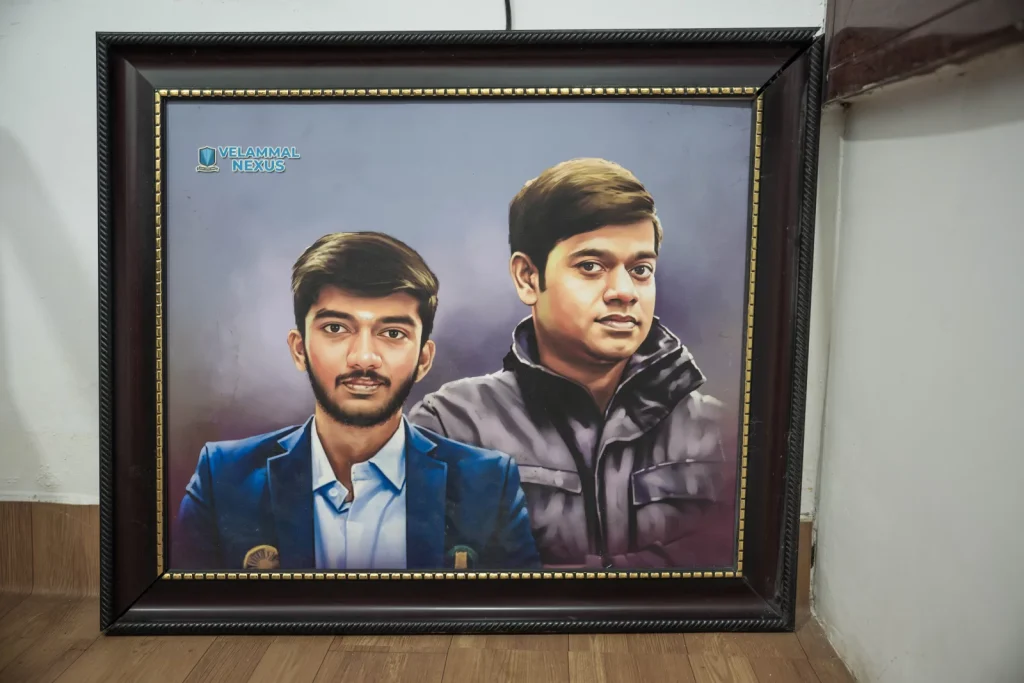
The pandemic, Netflix’s The Queen’s Gambit, and the explosion of chess on YouTube and Chess.com brought the game back to global limelight. But in India — and particularly Chennai — chess wasn’t a newfound trend. It was already a grassroots revolution in progress.
🧠 𝐖𝐡𝐲 𝐂𝐡𝐞𝐧𝐧𝐚𝐢? 𝐀 𝐂𝐮𝐥𝐭𝐮𝐫𝐞 𝐓𝐡𝐚𝐭 𝐁𝐫𝐞𝐚𝐭𝐡𝐞𝐬 𝐂𝐡𝐞𝐬𝐬
There’s a reason Chennai produces champions.
𝐇𝐞𝐫𝐞, 𝐜𝐡𝐞𝐬𝐬 𝐢𝐬𝐧’𝐭 𝐚𝐧 𝐚𝐟𝐭𝐞𝐫-𝐬𝐜𝐡𝐨𝐨𝐥 𝐚𝐜𝐭𝐢𝐯𝐢𝐭𝐲. 𝐈𝐭’𝐬 𝐚𝐧 𝐢𝐝𝐞𝐧𝐭𝐢𝐭𝐲.
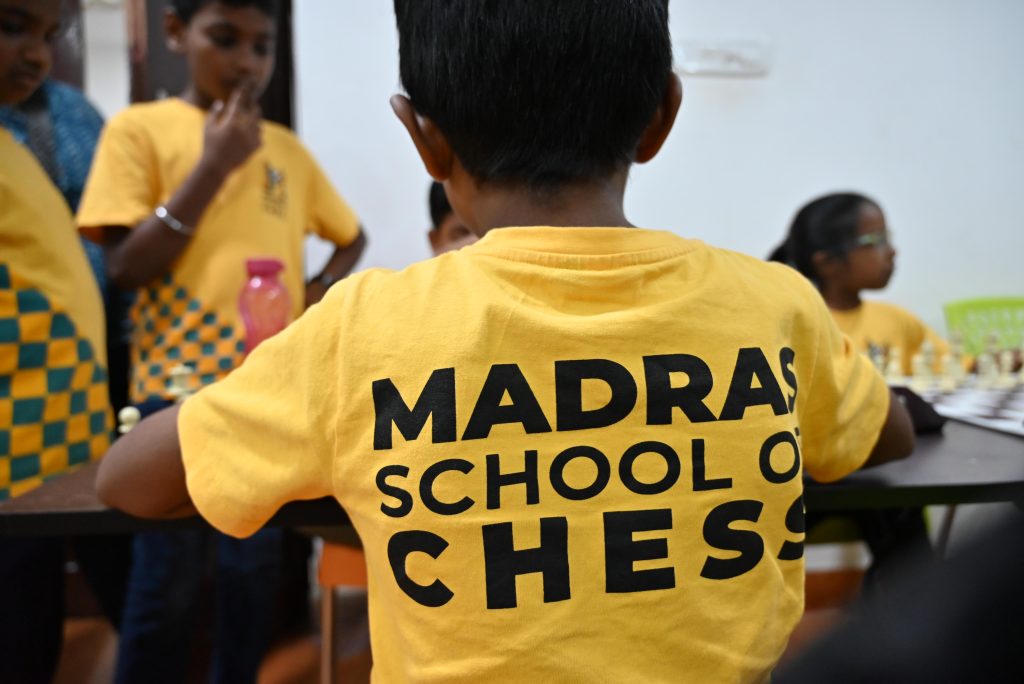
✔️ Parents in Chennai enroll their children as young as 3.5 years old.
✔️ Schools offer time off for tournaments.
✔️ Local businesses sponsor travel for young prodigies.
✔️ Communities respect chess as seriously as academics.
Even the government pitches in — top-performing players are offered public sector jobs with full benefits. That’s unheard of in many parts of the world.
And then there are academies like ours — Madras School of Chess, co-founded by GM Vishnu Prasanna, the former coach of Gukesh. We don’t just teach children how to move pieces. We build thinkers, tacticians, and problem solvers.
🎓𝐈𝐧𝐬𝐢𝐝𝐞 𝐌𝐚𝐝𝐫𝐚𝐬 𝐒𝐜𝐡𝐨𝐨𝐥 𝐨𝐟 𝐂𝐡𝐞𝐬𝐬: 𝐀 𝐍𝐞𝐰 𝐊𝐢𝐧𝐝 𝐨𝐟 𝐂𝐥𝐚𝐬𝐬𝐫𝐨𝐨𝐦
Step into one of our training sessions and you’ll witness something rare — a classroom buzzing without noise. Eyes glued to boards. Brains in overdrive. Laughter after blunders. Cheers for clever traps.
Here, children are not judged by grades — they’re celebrated for creativity, calculation, and composure.
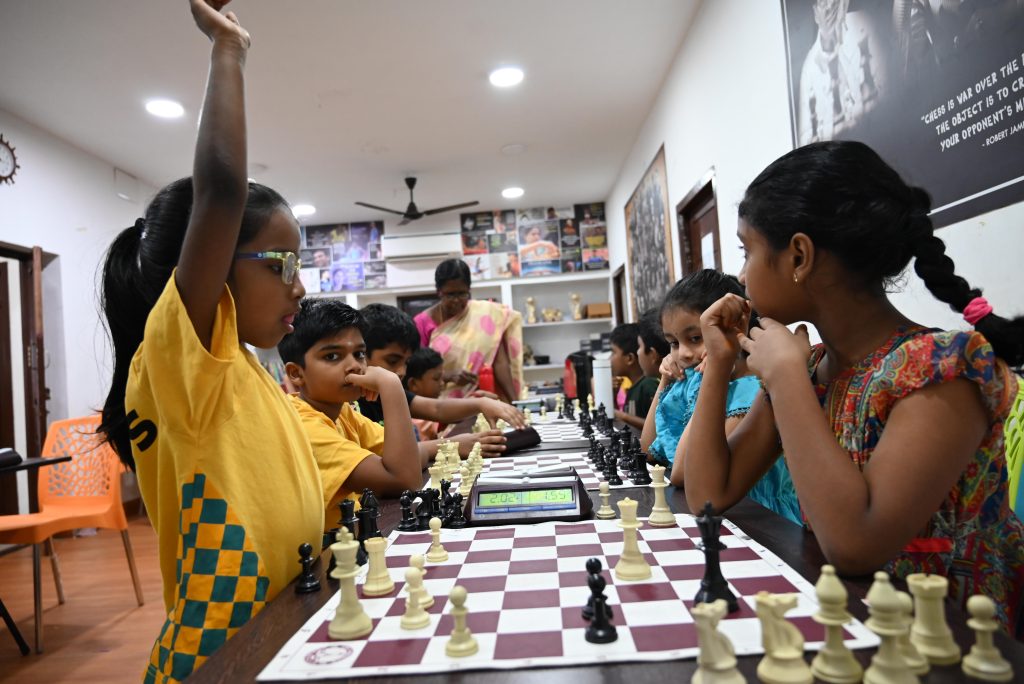
We believe every child has the potential to be a chess champion — not through pressure, but with patience, mentorship, and consistent effort.
Our founder GM Vishnu Prasanna’s coaching philosophy centers on:
Individualized training
Exposure to real tournaments
Mental fitness and discipline
A love for the game — before the medals
🌍 𝐂𝐡𝐞𝐬𝐬 𝐁𝐞𝐲𝐨𝐧𝐝 𝐭𝐡𝐞 𝐄𝐥𝐢𝐭𝐞: 𝐌𝐚𝐤𝐢𝐧𝐠 𝐭𝐡𝐞 𝐆𝐚𝐦𝐞 𝐀𝐜𝐜𝐞𝐬𝐬𝐢𝐛𝐥𝐞
While India celebrates its 85 grandmasters and international success, there remains one challenge: accessibility.
Most chess literature, training software, and lessons are in English — a language not spoken fluently by a majority in India. That’s why Tamil-based coaching, YouTube channels, and community-based chess centers are crucial.
At Madras School of Chess, we bridge this gap with:

Tamil and English dual-language coaching
Affordable classes to reach rural and urban children
Parent awareness sessions to promote healthy support, not pressure
Online classes to train kids across borders
Because talent isn’t limited to language. And a champion can rise from anywhere — if given the chance.
🌟 The Power of Parents, Passion and Purpose
Ask any grandmaster how they made it — and you’ll find a family behind their success.

Gukesh’s father paused his medical career to travel with him.
Praggnanandhaa’s mother carries homemade food to global events.
Countless others, quietly, sacrifice time and income for their children’s game.
At Madras School of Chess, we honor that partnership. We train the child, but also guide the parent — to create a balanced, stress-free, and joyful chess journey.
🏁𝐓𝐡𝐞 𝐍𝐞𝐱𝐭 𝐌𝐨𝐯𝐞 𝐈𝐬 𝐎𝐮𝐫𝐬
India — and Chennai — is no longer a silent observer in the chess world. We are loud, proud, and strategic.
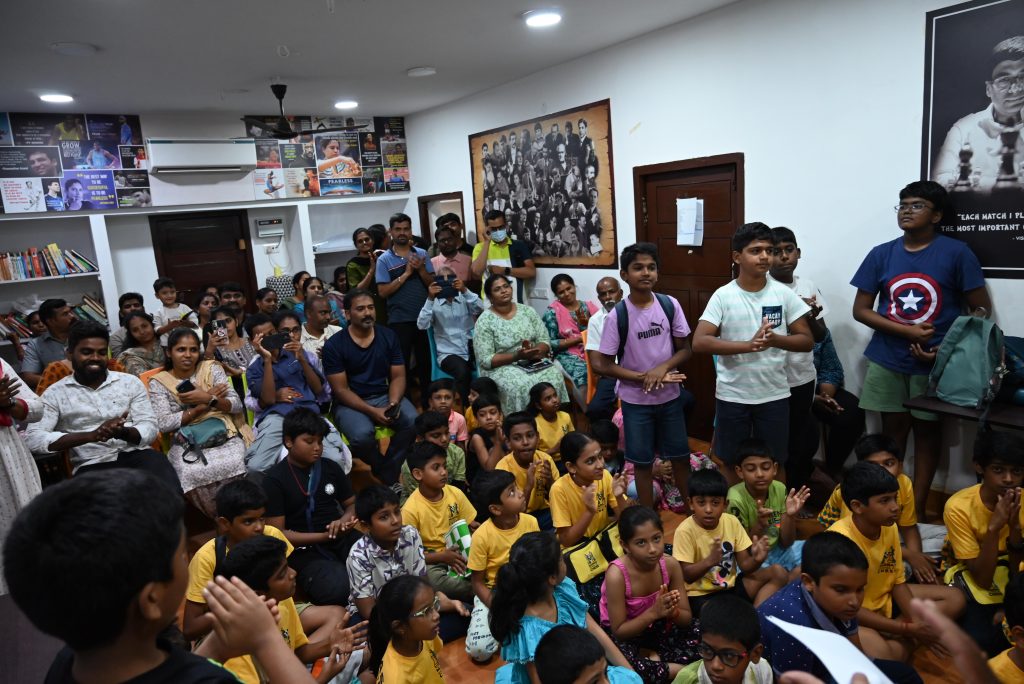
With a growing pool of young talent, accessible coaching, government support, and a cultural embrace of chess, we’re not asking if India will become the number one chess nation — we’re asking when.
And maybe, just maybe, the next world champion is sitting in one of our classrooms at Madras School of Chess right now — quietly sharpening their mind for the final move.
🔔 𝐉𝐨𝐢𝐧 𝐭𝐡𝐞 𝐌𝐨𝐯𝐞𝐦𝐞𝐧𝐭
Whether your child is just starting out or already making waves, Madras School of Chess is here to nurture their journey.
📍 Based in Chennai
📚 Online & Offline Classes Available
👑 Trained by National Masters and Grandmasters
🧩 For Kids, Teens, and Curious Adults
♟️ CONTACT US:
🎯 Make your next move the best one yet – join Madras School of Chess, where champions begin!
📍 T.Nagar | Anna Nagar | Mandaveli | Online
📞 +91 98404 03376
🌐 www.madrasschoolofchess.com
📲 Follow us: @madrasschoolofchess
Your trophy is just a move away! 🚀
Mastering Chess Openings: A Beginner’s Guide to Strong Starts for White and Black
Jun 05th, 2025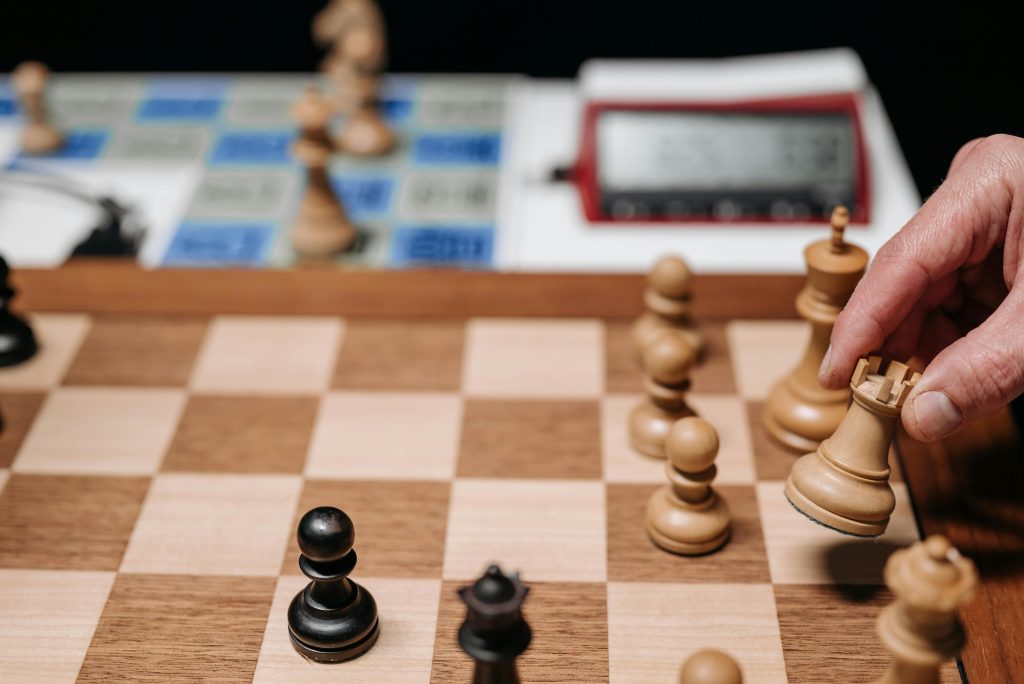
Whether you’re a complete beginner or an ambitious club player looking to sharpen your game, knowing strong openings is like having a secret weapon in chess. Openings set the stage for your entire game—get them right, and you’ll glide into the middlegame with a strong, confident position. Get them wrong, and you might find yourself fighting an uphill battle from the start.
Today, let’s dive into some of the strongest chess openings for both White and Black, their strategic ideas, traps to watch for, and tips to make them work for you!
1️⃣ Ruy Lopez (Spanish Opening) – The Gentleman’s Attack

Why It’s Popular:
The Ruy Lopez is a timeless classic for White. By pinning the knight on c6, White exerts pressure on the center, especially the e5 pawn. The Ruy Lopez isn’t just about grabbing material—it’s about long-term positional advantage. It’s a favorite at all levels, from club players to world champions.
What You Need to Know:
- White aims for slow build-up, controlling the center and preparing for attacks on the kingside.
- Black has various defenses, like the Exchange Variation (4.Bxc6), leading to an unbalanced pawn structure, or the Berlin Defense (3…Nf6), known for its solidity.
- Beware of traps like the Noah’s Ark Trap—a sneaky idea where Black traps White’s bishop after 4.Ba4 d6 5.c3 Bg4 6.h3 h5!?
2️⃣ The Italian Game – Simple, Yet Deadly
Why It’s a Great Choice:
The Italian is perfect for beginners—it teaches principles like quick development and center control while keeping tactics on the table. It’s more direct than the Ruy Lopez, with faster attacks on f7.

Key Ideas:
- White eyes the vulnerable f7 square early, with ideas like the Fried Liver Attack (after 4.Ng5).
- Black often responds with the Giuoco Piano (3…Bc5) or the Two Knights Defense (3…Nf6)—each with their own tactical traps!
- A famous trap: In the Two Knights, after 4.Ng5 d5 5.exd5 Nxd5, White has a sneaky trick with 6.Nxf7!?, known as the Fried Liver Attack—a bold sacrifice for an attacking initiative.
3️⃣ The Queen’s Gambit – Power Play for White
This opening is all about strategy. White offers a pawn to gain control of the center. If Black accepts (Queen’s Gambit Accepted), White gets dynamic play. If Black declines (Queen’s Gambit Declined), it leads to solid, strategic positions.

Why It’s Loved:
- It teaches pawn structures and positional ideas.
- You’ll learn important plans like targeting the c-file and exploiting the minority attack.
Pro Tip: Watch out for traps like the Elephant Trap in the Queen’s Gambit Declined:
1.d4 d5 2.c4 e6 3.Nc3 Nf6 4.Bg5 Nbd7 5.cxd5 exd5 6.Nxd5??—a blunder! Black responds with …Nxd5, winning a piece.
4️⃣ The Caro-Kann Defense – The Rock-Solid Shield
This opening is a favorite among positional players. Black aims to control the center with d5 and develop pieces behind a solid pawn chain.

What’s Cool About Caro-Kann:
- It avoids the sharp lines of the Sicilian, making it more positional and less theoretical.
- It leads to solid, long-term games where Black can gradually outplay White.
5️⃣ The Sicilian Defense – The Gladiator’s Weapon
If you want to fight for a win as Black, the Sicilian is your go-to. It creates an imbalanced position where both sides have chances for attack.

Hot Tips:
- There are many variations, from the Najdorf (5…a6) to the Dragon (5…g6). Each has unique traps—like the Poisoned Pawn in the Najdorf, where Black grabs a pawn but risks a deadly attack.
- As White, watch out for aggressive lines like the Smith-Morra Gambit (2.d4 cxd4 3.c3) that can catch Black off-guard.
Golden Rules for Any Opening:
✅ Control the center (with pawns and pieces).
✅ Develop your minor pieces (knights and bishops) early.
✅ Castle your king to safety.
✅ Avoid moving the same piece multiple times without a reason.
✅ Be aware of tactical tricks and traps!
Final Thoughts: Your Chess Journey Starts Here!
Openings are just the beginning of your chess adventure. By learning these fundamental openings—Ruy Lopez, Italian Game, Queen’s Gambit, Caro-Kann, and Sicilian—you’re not just memorizing moves, you’re unlocking the strategic heart of chess.

Whether you’re aiming for friendly games or tournament glory, the right opening gives you the best possible start.
📞 Contact Us
Looking for a chess class near you to elevate your skills?
Join Madras School of Chess, Chennai’s best chess academy, where students learn from top trainers and develop both opening strategies and overall game understanding.
Contact Number: +91 9840403376
Website: www.madrasschoolofchess.com
Our Branches: Anna Nagar, T. Nagar, Mandaveli, and Online.
Training Offered: Individual and Group Classes.
Let’s learn, grow, and master chess together!
Think, Reflect, Repeat: Chess Mastery Through Self-Analysis
May 30th, 2025
In the world of chess, progress is never accidental—it’s a result of consistent effort, reflection, and a hunger for improvement. Whether you’re a budding enthusiast or an experienced player seeking to sharpen your skills, one timeless method stands above the rest: analyzing your own games.

Every move you make on the chessboard is a reflection of your strategy, intuition, and understanding. By revisiting these decisions, you gain a front-row seat to your own thought process. But how do you ensure that your game analysis is both effective and enjoyable? And how can smart technology—like the revolutionary Chessnut Evo—supercharge your learning journey? Let’s explore.
Why Self-Analysis is the Foundation of Growth?

Many players underestimate the power of reviewing their own games. They focus on studying openings or memorizing tactics, but they miss the golden opportunity: understanding their personal decision-making process.
By analyzing your games, you uncover patterns in your thinking—both strengths and weaknesses. Did you rely too heavily on intuition and miss a concrete tactic? Were you too cautious in a winning position? Or perhaps you rushed in the endgame without considering alternatives? Each of these insights helps transform casual play into intentional, strategic improvement.
Step 1: Capture Every Move—Without Missing a Beat

For meaningful analysis, you need an accurate record of your games. Gone are the days of scribbling moves on paper or struggling with manual inputs on apps. The Chessnut Evo takes the hassle out of game logging with automatic piece recognition—every move is tracked flawlessly, whether you’re playing a 5-minute blitz or a 90-minute classical match.
Its sleek design and intuitive interface make it easy for players of all levels to focus on what truly matters: the game itself.
Step 2: Spot the Turning Points
Not every move carries equal weight. Some decisions change the course of the entire game. Learning to identify these critical moments—where a better choice could have led to victory or saved a position—is a skill in itself.

Chessnut Evo’s 12.3-inch display combined with its unique MAIA AI engine gives you more than just a verdict on a move; it explains decisions in a way that feels natural—like a coach sitting across the board. No flipping through books or juggling apps—everything is in front of you, on the board, ready to review.
Step 3: Learn the “Why”—Not Just the “What”
It’s easy to get caught up in what an engine says is the “best move.” But true improvement comes from asking: Why was this move good or bad? What alternatives existed?
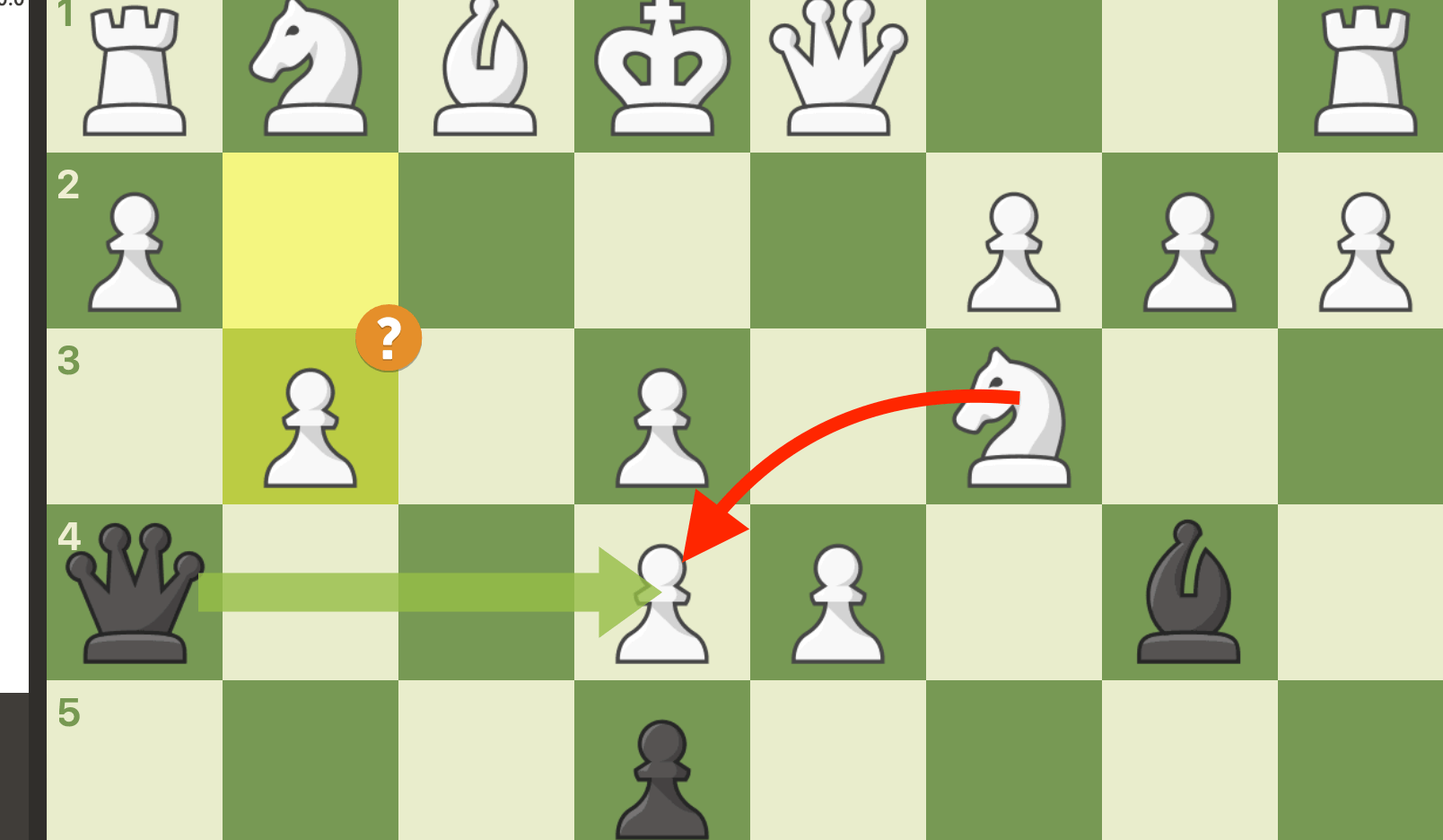
The Chessnut Evo’s human-like AI feedback is designed to simulate how a strong human opponent would evaluate your play. It gives context, not just cold numbers—teaching you to think critically, not just memorize answers.
Step 3: Learn the “Why”—Not Just the “What”
It’s easy to get caught up in what an engine says is the “best move.” But true improvement comes from asking: Why was this move good or bad? What alternatives existed?

There are human-like AI feedback is designed to simulate how a strong human opponent would evaluate your play. It gives context, not just cold numbers—teaching you to think critically, not just memorize answers.
Step 4: Connect Your Games to the Bigger Picture
Great players learn from others. Whether it’s studying grandmaster games or comparing your choices to higher-rated players, seeing different approaches expands your chess vision.

With Chessnut Evo’s seamless integration with platforms like Lichess and Chess.com, you can instantly compare your games with the world’s best or upload them for detailed analysis. Explore alternative lines, spot recurring mistakes, and build a stronger intuition by aligning your play with top-tier examples.
Step 5: Turn Insight into Action
Analysis isn’t just about looking back—it’s about using what you learn to play smarter games in the future. The key is consistent practice: review your games, extract lessons, and test them in your next match.

The analysis tools makes this cycle effortless. With 10 hours of battery life, fast hardware, and even voice control features, you can train anywhere, anytime. Whether you’re at home, in a café, or on the go, your analysis companion is ready when you are.
Bonus: Build Emotional Resilience Through Analysis
One hidden benefit of reviewing your games is developing mental toughness. By confronting your mistakes and learning from them, you build resilience—a critical skill for any chess player. With tools, you can turn painful losses into powerful learning moments, all while maintaining a positive mindset.
Conclusion: Your Journey to Mastery Starts with Reflection
Chess improvement isn’t just about learning new openings or tactics—it’s about understanding your own unique style and decision-making process. By making game analysis a regular part of your chess routine, you unlock a deeper level of growth.
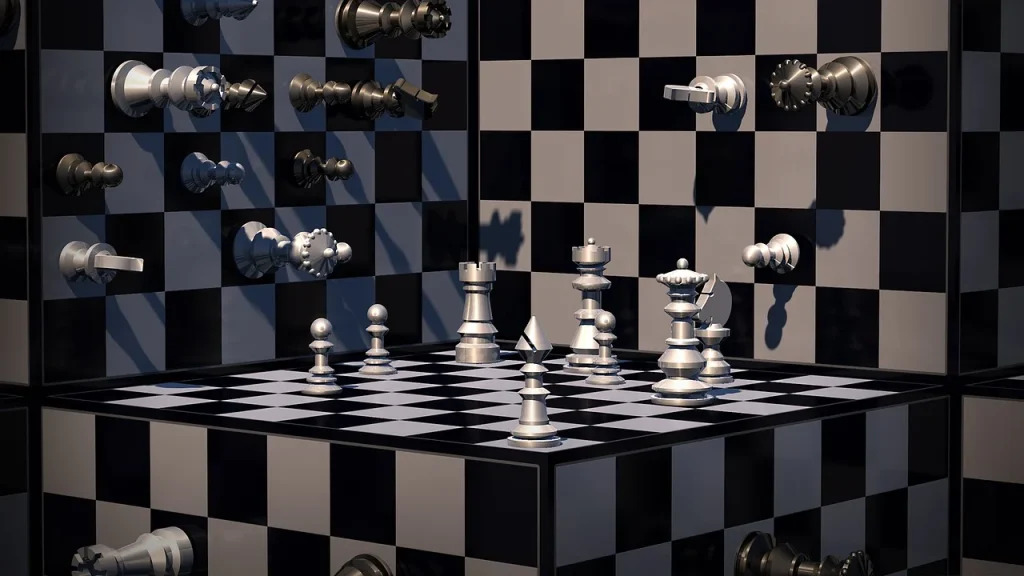
And with a smart, intuitive tools, analysis isn’t a chore—it’s an engaging, insightful experience. From seamless game recording to AI-backed coaching, Chessnut Evo empowers you to analyze, learn, and improve like never before.
♟️ Ready to Make Your Move?
Whether your child is just starting or you’re aiming for championship titles, Madras School of Chess is where real transformation begins. Guided by expert coaches and proven training methods, we shape beginners into thinkers—and thinkers into champions.
🏆 Chennai’s Premier Chess Academy
📍 Branches: Anna Nagar | T. Nagar | Mandaveli
📞 Call/WhatsApp: 98404 03376
Ready to level up your chess journey? Start analyzing today—because every move holds a lesson, and every lesson brings you closer to mastery.
Nihal Sarin’s Silver Run Powered by GM Vishnu Prasanna!
May 20th, 2025
GM Nihal Sarin clinches Silver at the Asian Championship after teaming up with GM Vishnu Prasanna, Co-Founder of Madras School of Chess!
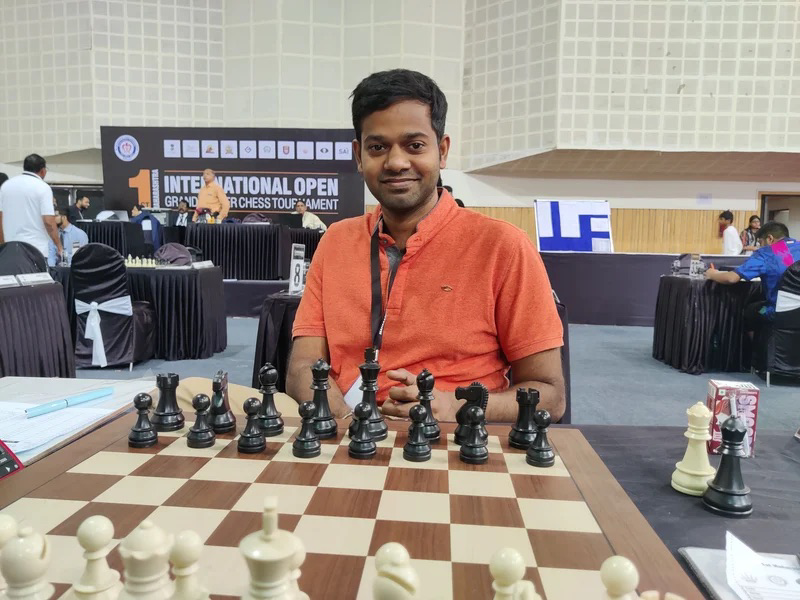
In a promising new chapter for Indian chess, Grandmaster Nihal Sarin has secured the silver medal at the prestigious Asian Individual Men’s Chess Championship, marking a strong beginning to his collaboration with GM Vishnu Prasanna, the visionary Co-Founder of Madras School Of Chess.
This isn’t just a story of a medal—it’s the rise of a dynamic new chess duo. Known for his calm demeanor and razor-sharp focus, Nihal Sarin has been a rising star in the global chess arena. His latest achievement, however, is not just a personal triumph but a testament to the strength of strategy, preparation, and mentorship.

GM Vishnu Prasanna, the architect behind some of India’s greatest modern chess successes, brings to this partnership years of experience, discipline, and deep theoretical knowledge. From guiding Gukesh D into world-class form to now mentoring Nihal, Vishnu’s coaching career is a masterclass in chess evolution.
A Mentor Who Creates Masters:
What makes this collaboration exciting is not just the results, but the process behind them. Every move on the board is a reflection of countless hours of analysis, psychological preparation, and tailored training methods. Under Vishnu’s guidance, Nihal seems to be sharpening not just his tactics, but his overall approach to high-stakes tournament play.

The Asian Championship served as a testing ground—and the silver medal is a clear signal. This duo is here to challenge, compete, and claim.
Guiding the Game, Shaping Champions – The Vision of GM Vishnu Prasanna, Co-Founder of Madras School of Chess

At the heart of Madras School of Chess stands GM Vishnu Prasanna, a visionary co-founder and a guiding force behind many rising stars. His strategic brilliance and calm mentorship have carved out unique paths for young talents to thrive. As the former coach of the reigning World Chess Champion Gukesh, his legacy continues to inspire every student who enters our academy. GM Vishnu doesn’t just teach chess—he cultivates thinking minds and future champions. With every move, Madras School of Chess shines brighter, driven by his unwavering commitment to excellence.
Eyes on the Future:
As the chess world watches, this silver moment could very well be the beginning of a golden era for Nihal Sarin. The partnership with Vishnu Prasanna is fresh, but the foundation is already strong. With upcoming international events and rising stakes, we expect nothing short of brilliance.

In the grand game of chess, strategy wins the day—but synergy wins championships. And this team is already proving they have both.
♟️ Ready to Make Your Move?
Whether your child is just starting or you’re aiming for championship titles, Madras School of Chess is where real transformation begins. Guided by expert coaches and proven training methods, we shape beginners into thinkers—and thinkers into champions.
🏆 Chennai’s Premier Chess Academy
📍 Branches: Anna Nagar | T. Nagar | Mandaveli
📞 Call/WhatsApp: 98404 03376
Join the legacy. Build your strategy. Checkmate your limits.
Enroll Today!
From Ancient Battlefields to Modern Mastery: The Evolution of Chess
Apr 29th, 2025
Chess didn’t just magically become the global phenomenon we know today. Its roots are ancient, weaving back through centuries of history, invention, and imagination.
Originating from India as Chaturanga around 600 AD, chess predates much of recorded history—and many of the world’s greatest inventions. Yet, the game in its early days looked very different from the chessboard we recognize now.
Today, we embark on a journey through time to explore how chess evolved, morphed, and captured the hearts of millions, from dusty palaces to digital screens.
We’ll begin with Chaturanga and conclude at the historic moment when Wilhelm Steinitz earned the crown of the very first World Chess Champion.
Let’s dive in!

The Birth of a Legend: Chaturanga and Its Beginnings

Around 1,500 years ago, somewhere in India, an ingenious game called Chaturanga took form. Though the precise year remains debated, most historians agree it flourished by 700 AD.
This early version of chess bore some noticeable differences compared to today’s game:
- Raja (King) – One square in any direction
- Matri (Counselor/Queen) – Only one square diagonally
- Ratha (Chariot/Rook) – Like today’s rook
- Gaja (Elephant/Bishop) – Two squares diagonally, jumping over pieces
- Ashva (Horse/Knight) – Moves as today’s knight
- Padàti (Pawn) – Moves like a pawn but with notable differences

Victory wasn’t achieved through checkmate but by capturing the king. Draws were nonexistent—stalemate meant defeat!
As Chaturanga spread westward to Persia by 500 AD, it evolved yet again.
A Royal Gift: Shatranj in Persia

When an Indian king presented Chaturanga as a luxurious gift (crafted with rubies and emeralds) to the Persian empire, he unknowingly launched the next chapter of chess.
The Persians transformed the game into Shatranj, keeping most of the structure but adding one crucial rule: checkmate. Players now had to declare Shāh (check) and Shāh Māt (the king is helpless).
The pieces were renamed, too:
- Shāh (King) – Same movements
- Firzan (Queen) – One square diagonally
- Rukh (Rook) – Same as modern rook
- Fīl (Bishop) – Two-square diagonal jump
- Faras (Knight) – Same as knight today
- Baidaq (Pawn) – Standard pawn movement

During the Islamic Golden Age, Shatranj flourished, leading to chess books by Al-Adli and Al-Suli. It even birthed variants like Four-Player Shatranj and Circular Chess.
But the story doesn’t end there.
The Chess Family Grows: Spreading Beyond Borders

While Persia honed Shatranj, other regions created their own chess-like games:
- China adapted Chaturanga into Xiangqi—with rivers, palaces, and cannons that leap over pieces.
- Japan crafted Shogi, introducing the revolutionary idea of reusing captured pieces!
- Mongolia birthed Shatar, a rugged version reflecting Mongol life, where the rook became a Tereg (ox cart).
Each region took the spirit of Chaturanga and breathed unique life into it.
Europe Enters the Game: Medieval Innovations

Chess arrived in Europe via multiple routes: Moorish Spain, Crusader knights, and Byzantine traders.
Here, the board—and the game itself—transformed dramatically.
- Elephants became bishops.
- Chariots turned into towers (rooks).
- Foot soldiers were now pawns, representing the common folk.
By 1200, chess was the pastime of nobles. But games dragged on for days! To speed things up:
- Pawns could move two squares on their first move (leading to the en passant rule).
- Castling was invented to tuck kings safely into corners.
- The queen, once the weakest piece, became the most powerful force on the board.
Europe didn’t just change the rules—they made chess visually appealing too. Pieces morphed from abstract tokens into sculpted miniatures of medieval life.
Chess Faces Resistance and Rises Stronger

Chess wasn’t universally loved. Some religious leaders branded it sinful, linking it to gambling. King Louis IX even banned it in 1254 (unsuccessfully, of course).
Still, chess kept marching forward, with names like Ruy López de Segura and Gioacchino Greco pushing chess theory into new heights.
Books were printed, strategies codified—and chess started to feel a lot like the modern mental battlefield we know today.
The Road to the World Champion: A New Era Dawns

𝐁𝐲 𝐭𝐡𝐞 𝟏𝟖𝟎𝟎𝐬, 𝐭𝐡𝐞 𝐜𝐡𝐞𝐬𝐬 𝐰𝐨𝐫𝐥𝐝 𝐰𝐚𝐬 𝐛𝐮𝐳𝐳𝐢𝐧𝐠.
The first chess clubs, like Paris’s Café de la Régence and London’s Simpson’s Divan, became battle arenas for sharp minds.
Sandglasses and eventually mechanical clocks were introduced to stop players from spending hours pondering a single move.

As competition heated up, one man stood above the rest: Wilhelm Steinitz.
Unlike his predecessors, who preferred all-out attacks, Steinitz pioneered the art of positional play—slowly building tiny advantages until his opponents collapsed.
The rivalry between Steinitz and Johannes Zukertort set the stage for history’s biggest chess showdown.
A Crown is Forged: The First World Chess Championship

In 1886, chess history was made.
The United States hosted the first-ever World Chess Championship between Steinitz and Zukertort.
The match was grueling—twenty games long—and Steinitz crushed his rival 10–5 (excluding draws).
He was crowned the first official World Chess Champion, opening a legacy that continues today.
Conclusion: The Endless Journey of Chess
From dusty Indian courts to bustling European cafés, from fierce Mongol warriors to Parisian philosophers—chess has evolved, adapted, and thrived.
Each era layered a new strategy, rule, or dream upon a simple battlefield of 64 squares.
And as we continue to play, study, and fall in love with the game, we also become part of this timeless story.
𝐋𝐨𝐧𝐠 𝐥𝐢𝐯𝐞 𝐜𝐡𝐞𝐬𝐬!
♟️ Begin Your Chess Journey with the Best!
📍 Locations: T. Nagar | Anna Nagar | Mandaveli | Online
📞 Call: +91 98404 03376
🌐 Visit: www.madrasschoolofchess.com
Follow us for updates and inspiration: @madrasschoolofchess
👉 Master the game. Shape your future. Start today!
Train with India’s Chess Titans: Secrets of Grandmasters Revealed At This Chess Camp!
Apr 03rd, 2025
Are you a 1400-1800 rated chess player looking to refine your strategies, outplay your opponents, and take your game to the next level? The Madras School of Chess (MSC) presents an exclusive April Rated Chess Camp designed to help you sharpen your skills with elite Grandmasters and International Masters!
This intensive 3-day chess camp will provide expert training, hands-on activities, and deep strategic insights from some of India’s finest chess minds. Whether you’re an aspiring champion or a passionate player, this is the perfect opportunity to unlock your full potential.
📌 Camp Details:
📅 Dates: April 18, 19, 20, 2024
🕙 Time: 10:00 AM – 5:00 PM
📍 Location: Anna Nagar Premises, Chennai
💰 Fees: ₹4999 (including GST)
👨🏫 Training Structure:
✔️ Lecture Hours: 15 Hours of Grandmaster-led classes
✔️ Activity Hours: 3 Hours of interactive chess challenges
🎓 Meet Your Expert Coaches:
♟ GM Vishnu Prasanna

✅ 33rd Indian Grandmaster
✅ Former Coach of World Chess Champion GM Gukesh
✅ Renowned for his deep understanding of chess strategies
♟ GM Akash Ganesan

✅ 66th Indian Grandmaster
✅ Youngest National Senior Chess Champion
✅ Expert in opening theory & positional play
♟ IM Navin Kanna

✅ U-25 National Champion (2014)
✅ U-13 National Champion (2002)
✅ Tamil Nadu State Chess Champion (2012)
These world-class coaches will guide you through advanced strategies, tactics, and endgames, ensuring that you gain practical skills to apply in your next tournament.
📝 What You Will Learn:
🔹 Advanced Opening Preparation – Learn powerful opening setups tailored to your playing style.
🔹 Middlegame Mastery – Improve positional play, calculation techniques, and attack-building.
🔹 Endgame Expertise – Master key theoretical endgames and practical winning strategies.
🔹 Tactical Vision & Calculation – Identify threats, spot combinations, and execute powerful moves.
🔹 Practical Tournament Tips – Insights on psychological preparation and decision-making.
This camp is not just about learning; it’s about applying knowledge through practical exercises, game analysis, and exclusive training techniques.
🚀 Why You Should Join This Camp:

✔️ Elite Training – Learn from top GMs & IMs with proven coaching success.
✔️ Structured Curriculum – A well-planned syllabus focusing on practical improvement.
✔️ Hands-on Activities – Interactive chess exercises, puzzles, and practice games.
✔️ Exclusive Small Group Training – Get personal attention and feedback.
✔️ Unmatched Learning Experience – Gain insights, strategies, and preparation techniques used by champions.
🎯 Only Limited Seats Available! Secure your spot today before it’s too late!
📢 How to Register?
📞 Call/WhatsApp: +91 9840403376
🌐 Register Online: www.madrasschoolofchess.com
📍 Location: Anna Nagar Premises, Chennai
🔥 Don’t miss this golden opportunity to level up your chess skills and compete with confidence!
🔔 Register NOW and start your journey to chess mastery! 🏆♟
𝐑𝐞𝐚𝐝𝐲 𝐭𝐨 𝐄𝐥𝐞𝐯𝐚𝐭𝐞 𝐘𝐨𝐮𝐫 𝐂𝐡𝐞𝐬𝐬 𝐒𝐤𝐢𝐥𝐥𝐬?
Join the Madras School of Chess, where champions are made! Whether you’re a beginner or an advanced player, our expert coaching will help you master the game.
📍 Locations: T.Nagar, Anna Nagar, Mandaveli & Online
📞 Call: +91 98404 03376
🌐 Visit: www.madrasschoolofchess.com
Checkmate Your Boredom: Dive Into the Exciting World of Chess!
Mar 29th, 2025
Welcome, chess lovers and curious minds! Whether you’re making your first move or already a tactical genius, chess is an exhilarating game filled with endless possibilities. It’s not just about capturing pieces—it’s a journey of strategy, creativity, and pure enjoyment! Let’s explore why chess is both fun and incredibly beneficial for your mind and soul.
The Fun Side of Chess

Chess is like a thrilling adventure where every move writes a new story. From heart-racing attacks to clever escapes, every game is a unique experience. Here’s why chess is more than just a game:
- Exciting Openings: Just like a gripping novel, a chess game begins with intrigue. Whether you enjoy the flamboyant King’s Gambit or the solid Caro-Kann Defense, experimenting with different openings adds a touch of excitement to your game.
- Unique Chess Variants: Feeling adventurous? Shake things up with fun versions of chess! Try Chess960 for a shuffled starting position, Crazyhouse for chaotic piece-swapping, or Bughouse for a fast-paced team battle. These fresh twists make chess even more electrifying.
- Brain-Teasing Puzzles: Love challenges? Chess puzzles put your problem-solving skills to the test. Solving tactical puzzles boosts your ability to think ahead and outsmart opponents. Ready to crack a tough one today?
The Mind-Boosting Benefits of Chess

Chess isn’t just a game—it’s a mental workout! Here’s how it supercharges your brain:
- Sharpen Your Thinking Skills: Chess is like lifting weights for your brain. It enhances memory, concentration, and problem-solving abilities, making you sharper in everyday life.
- Stay Cool Under Pressure: Chess teaches patience and emotional control. Whether you’re facing a tough decision on the board or in life, chess helps you remain calm and make thoughtful choices.
- Connect With People Worldwide: Chess is a universal language that brings people together. Whether you’re playing at home, in a local club, or online with players from across the globe, chess fosters friendships and camaraderie.
- Boost Your Strategic Mindset: Every chess move requires careful planning. This skill translates into real-life situations, helping you think ahead, strategize, and make better decisions in work and daily activities.
- A Stress Reliever & Brain Booster: Need a mental escape? Chess offers therapeutic benefits for all ages. It helps kids develop critical thinking and keeps older adults mentally agile. Plus, it’s a great way to unwind and relax!
Fun Ways to Elevate Your Chess Journey

- Try Blindfold Chess: Challenge yourself by playing without looking at the board! It enhances memory, focus, and visualization skills—plus, it’s a cool party trick.
- Join Online Tournaments: Test your skills against players worldwide! Online chess tournaments offer an exciting way to improve and compete at your level.
- Discover New Strategies: Experiment with different tactics and see how they impact your game. Chess is all about learning and evolving!
What’s your favorite thing about chess? Have you discovered a new strategy that changed the way you play? Share your thoughts and let’s celebrate the joy of chess together!
𝐇𝐚𝐩𝐩𝐲 𝐩𝐥𝐚𝐲𝐢𝐧𝐠 𝐚𝐧𝐝 𝐦𝐚𝐲 𝐲𝐨𝐮𝐫 𝐧𝐞𝐱𝐭 𝐦𝐨𝐯𝐞 𝐛𝐞 𝐲𝐨𝐮𝐫 𝐛𝐞𝐬𝐭 𝐨𝐧𝐞 𝐲𝐞𝐭!
𝐑𝐞𝐚𝐝𝐲 𝐭𝐨 𝐄𝐥𝐞𝐯𝐚𝐭𝐞 𝐘𝐨𝐮𝐫 𝐂𝐡𝐞𝐬𝐬 𝐒𝐤𝐢𝐥𝐥𝐬?
Join the Madras School of Chess, where champions are made! Whether you’re a beginner or an advanced player, our expert coaching will help you master the game.
📍 Locations: T.Nagar, Anna Nagar, Mandaveli & Online
📞 Call: +91 98404 03376
🌐 Visit: www.madrasschoolofchess.com
Start your journey to chess mastery today! ♟️🚀
Mastering Chess Puzzles: The Best Strategies to Solve Tactics Correctly!
Mar 14th, 2025
Chess puzzles are an excellent way to sharpen your tactical vision and improve decision-making skills during real games. By regularly solving puzzles, you train your mind to quickly recognize patterns, anticipate threats, and execute strong moves with precision. Over time, this reduces blunders and enhances overall playing strength.

Why Solving Puzzles is Crucial for Chess Improvement

Practicing chess puzzles helps you:
✔ Improve tactical awareness to spot threats and opportunities.
✔ Enhance calculation skills for accurate move sequencing.
✔ Develop pattern recognition to identify recurring tactical motifs.
✔ Strengthen problem-solving abilities under time constraints.
Steps to Solve Chess Puzzles Effectively
1. Identify Tactical Motifs
Before making a move, recognize key tactical elements in the position:
🔹 Loose or undefended pieces.
🔹 X-ray attacks through diagonals or files.
🔹 Pieces aligned on the same rank, file, or diagonal.
🔹 Weak king position vulnerable to checks and mates.

2. Consider Candidate Moves
Focus on forcing moves first—checks, captures, and threats (CCT). These are often the foundation of successful tactics. Always scan for moves that can directly influence the opponent’s king or material balance.

3. Calculate All Variations
Calculation is the heart of chess tactics. Before making a move:
✔ Analyze all possible responses from your opponent.
✔ Look for forcing sequences (checks, captures, and threats).
✔ Visualize different variations in your head without touching the pieces.
A strong player doesn’t rely on trial and error but calculates deeply to ensure the chosen move is correct before executing it.

4. Recognize and Name the Tactic
Once you find the best move, identify the tactical theme behind it—such as a pin, fork, skewer, discovered attack, or double check. Naming these tactics reinforces learning and helps in recalling them during real games.

5. Verify the Solution
Double-check your answer by ensuring:
✔ No better move is available.
✔ The opponent’s best defensive responses have been considered.
✔ The solution leads to a decisive advantage (winning material, checkmate, or significant positional gain).

Tips for Efficient Puzzle Solving
✅ Start with easier puzzles and gradually increase difficulty.
✅ Use a real chessboard if visualization is challenging.
✅ Set a time limit to simulate practical game situations.
✅ Learn from mistakes—review incorrect solutions and understand what went wrong.
At first, this process might seem slow, but with practice, your mind will process tactical patterns instantly, leading to stronger play over the board.
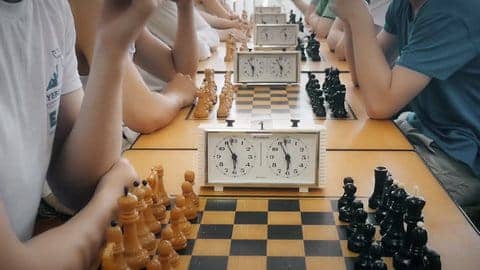
Practical Examples of Tactical Solving
Example 1
Position Analysis: White’s king is exposed, a rook is active on the 2nd rank, and both bishops are aimed at the king.
Steps to Solve:
- Tactical Motifs – Weak king, aligned pieces, active bishops.
- Candidate Moves – Consider Bxc2 and Rxc2.
- Calculation:
- 1… Bxc2 2. Qxc3 → White wins.
- 1… Rxc2 2. Kb1 Rb2 3. Ka1 (or Kc1) Rb1# → Checkmate!
- Recognized Tactics – Discovered attack & double check.
- Verification – The solution is correct. ✅

Example 2
Position Analysis: White’s king is weak, and Black’s king is highly active, creating attacking chances.

Steps to Solve:
- Tactical Motifs – Weak back-rank, active king, open files.
- Candidate Moves – Consider Rxg4 and Rc1.
- Calculation:
- 1… Rxg4 2. Rd5 Ke3 3. Nd1 → Discovered attack, Black loses.
- 1… Rc1 2. Nd1 Rf1 3. Kxf1 Rxd1 4. Kg2 → The king escapes, White wins.
- 1… Rc1 2. Nd1 Rxd1 3. Kxd1 Rf1# → Checkmate!
- Recognized Tactics – Sacrifices leading to a back-rank checkmate.
- Verification – The solution is accurate. ✅
Final Thoughts

Mastering chess puzzles requires patience, consistency, and strong calculation skills. The key is to train your mind to think logically and systematically. When solving puzzles, don’t rush—calculate deeply, understand tactical motifs, and refine your pattern recognition. Over time, these skills will seamlessly integrate into your games, making you a more formidable player.
𝐇𝐚𝐩𝐩𝐲 𝐬𝐨𝐥𝐯𝐢𝐧𝐠! ♟♜♞
𝐑𝐞𝐚𝐝𝐲 𝐭𝐨 𝐄𝐥𝐞𝐯𝐚𝐭𝐞 𝐘𝐨𝐮𝐫 𝐂𝐡𝐞𝐬𝐬 𝐒𝐤𝐢𝐥𝐥𝐬?
Join the Madras School of Chess, where champions are made! Whether you’re a beginner or an advanced player, our expert coaching will help you master the game.
📍 Locations: T.Nagar, Anna Nagar, Mandaveli & Online
📞 Call: +91 98404 03376
🌐 Visit: www.madrasschoolofchess.com
Start your journey to chess mastery today! ♟️🚀
How to Obtain a FIDE Rating: Your Ultimate Guide to Becoming a Rated Chess Player
Feb 25th, 2025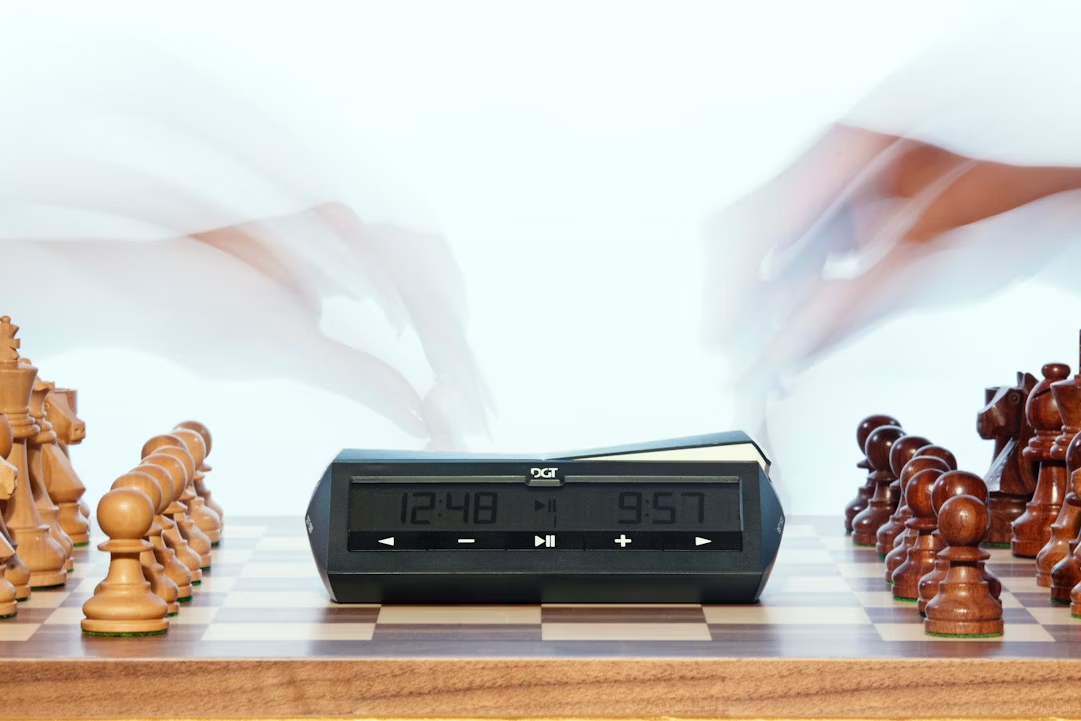
If you’re passionate about chess and aspire to compete at a professional level, securing a FIDE rating is a crucial step. Recognized globally, a FIDE (Fédération Internationale des Échecs) rating reflects your performance in official tournaments and establishes your standing in the chess community. This guide will take you through the essential steps to obtaining your first FIDE rating.
𝐒𝐭𝐞𝐩 𝟏: 𝐎𝐛𝐭𝐚𝐢𝐧 𝐚 𝐅𝐈𝐃𝐄 𝐈𝐃
Before participating in FIDE-rated tournaments, you must acquire a FIDE ID. This unique identification number is issued through your national chess federation and serves as your official record in FIDE events. The process to obtain one varies by country but typically includes:
𝟏.𝐑𝐞𝐠𝐢𝐬𝐭𝐞𝐫𝐢𝐧𝐠 𝐰𝐢𝐭𝐡 𝐲𝐨𝐮𝐫 𝐧𝐚𝐭𝐢𝐨𝐧𝐚𝐥 𝐜𝐡𝐞𝐬𝐬 𝐟𝐞𝐝𝐞𝐫𝐚𝐭𝐢𝐨𝐧.
𝟐.𝐏𝐫𝐨𝐯𝐢𝐝𝐢𝐧𝐠 𝐩𝐞𝐫𝐬𝐨𝐧𝐚𝐥 𝐝𝐞𝐭𝐚𝐢𝐥𝐬 𝐬𝐮𝐜𝐡 𝐚𝐬 𝐲𝐨𝐮𝐫 𝐟𝐮𝐥𝐥 𝐧𝐚𝐦𝐞, 𝐝𝐚𝐭𝐞 𝐨𝐟 𝐛𝐢𝐫𝐭𝐡, 𝐚𝐧𝐝 𝐧𝐚𝐭𝐢𝐨𝐧𝐚𝐥𝐢𝐭𝐲.
𝟑.𝐏𝐚𝐲𝐢𝐧𝐠 𝐚𝐧𝐲 𝐚𝐩𝐩𝐥𝐢𝐜𝐚𝐛𝐥𝐞 𝐟𝐞𝐞𝐬 𝐫𝐞𝐪𝐮𝐢𝐫𝐞𝐝 𝐛𝐲 𝐲𝐨𝐮𝐫 𝐧𝐚𝐭𝐢𝐨𝐧𝐚𝐥 𝐟𝐞𝐝𝐞𝐫𝐚𝐭𝐢𝐨𝐧.
Once you receive your FIDE ID, all your rated games and tournament performances will be tracked under this identifier, forming the foundation of your chess career.
In the next steps, we’ll explore how to participate in FIDE-rated tournaments and earn your first official chess rating!

𝐒𝐭𝐞𝐩 𝟐: 𝐋𝐨𝐜𝐚𝐭𝐞 𝐚 𝐅𝐈𝐃𝐄-𝐑𝐚𝐭𝐞𝐝 𝐓𝐨𝐮𝐫𝐧𝐚𝐦𝐞𝐧𝐭
To acquire a FIDE rating, you must participate in an officially recognized FIDE-rated tournament. You can find such events by:
Checking your national chess federation’s website for details on upcoming rated tournaments.
Visiting the FIDE website (www.fide.com) to explore international tournament listings.
Consulting local chess clubs to see if they host or have information about FIDE-rated competitions.
Ensure that the tournament adheres to FIDE regulations, as not all chess events qualify for official rating calculations.
𝐒𝐭𝐞𝐩 𝟑: 𝐌𝐞𝐞𝐭𝐢𝐧𝐠 𝐭𝐡𝐞 𝐁𝐚𝐬𝐢𝐜 𝐑𝐞𝐪𝐮𝐢𝐫𝐞𝐦𝐞𝐧𝐭𝐬
To secure your initial FIDE rating, you must fulfill the following conditions:
Compete in a FIDE-rated tournament.
Score at least one point (win or draw) against an already-rated player.
Play a minimum of five games within a rated event.
Achieve a performance rating of at least 1400.
Step 4: Competing Against Rated Players
For your first rating to be assigned, you need to secure at least one point (either through a win or a draw) against players who already have a FIDE rating. If you fail to score against rated players, your performance will not be considered for obtaining a FIDE rating. You can estimate your provisional rating using the FIDE Rating Calculator.
𝐒𝐭𝐞𝐩 𝟓: 𝐀𝐰𝐚𝐢𝐭 𝐭𝐡𝐞 𝐏𝐮𝐛𝐥𝐢𝐜𝐚𝐭𝐢𝐨𝐧 𝐨𝐟 𝐘𝐨𝐮𝐫 𝐑𝐚𝐭𝐢𝐧𝐠
Once your tournament concludes, the event organizers will submit the results to FIDE. Official ratings are updated on the 1st of every month and can be accessed on the FIDE website (ratings.fide.com). If you have met all requirements, your name will appear in the FIDE rating list.
𝐒𝐭𝐞𝐩 𝟔: 𝐂𝐨𝐧𝐭𝐢𝐧𝐮𝐞 𝐏𝐥𝐚𝐲𝐢𝐧𝐠 𝐭𝐨 𝐈𝐦𝐩𝐫𝐨𝐯𝐞 𝐘𝐨𝐮𝐫 𝐑𝐚𝐭𝐢𝐧𝐠
Earning a FIDE rating is just the beginning. To enhance your rating, consider:
Competing regularly in rated tournaments.
Studying chess openings, middlegame strategies, and endgames.
Analyzing your games to identify areas for improvement.
Challenging stronger players to gain practical experience.
Achieving a FIDE rating is an exciting milestone, allowing you to compete internationally, monitor your progress, and set new objectives. Whether your goal is to reach 2000+ or beyond, consistent practice and strategic learning are key to improvement.
If you’re looking for high-level practice games against Titled Players, check out BoltChess (boltchess.com)—a great platform to gain valuable experience before entering an official FIDE-rated tournament.
Ready to Elevate Your Chess Skills?
Join the Madras School of Chess, where champions are made! Whether you’re a beginner or an advanced player, our expert coaching will help you master the game.
📍 Locations: T.Nagar, Anna Nagar, Mandaveli & Online
📞 Call: +91 98404 03376
🌐 Visit: www.madrasschoolofchess.com
Start your journey to chess mastery today! ♟️🚀
𝐂𝐚𝐫𝐥𝐬𝐞𝐧 𝐑𝐞𝐭𝐮𝐫𝐧𝐬 𝐭𝐨 𝐂𝐥𝐚𝐬𝐬𝐢𝐜𝐚𝐥 𝐂𝐡𝐞𝐬𝐬: 𝐅𝐢𝐫𝐬𝐭 𝐒𝐡𝐨𝐰𝐝𝐨𝐰𝐧 𝐰𝐢𝐭𝐡 𝐖𝐨𝐫𝐥𝐝 𝐂𝐡𝐚𝐦𝐩𝐢𝐨𝐧 𝐆𝐮𝐤𝐞𝐬𝐡
Feb 18th, 2025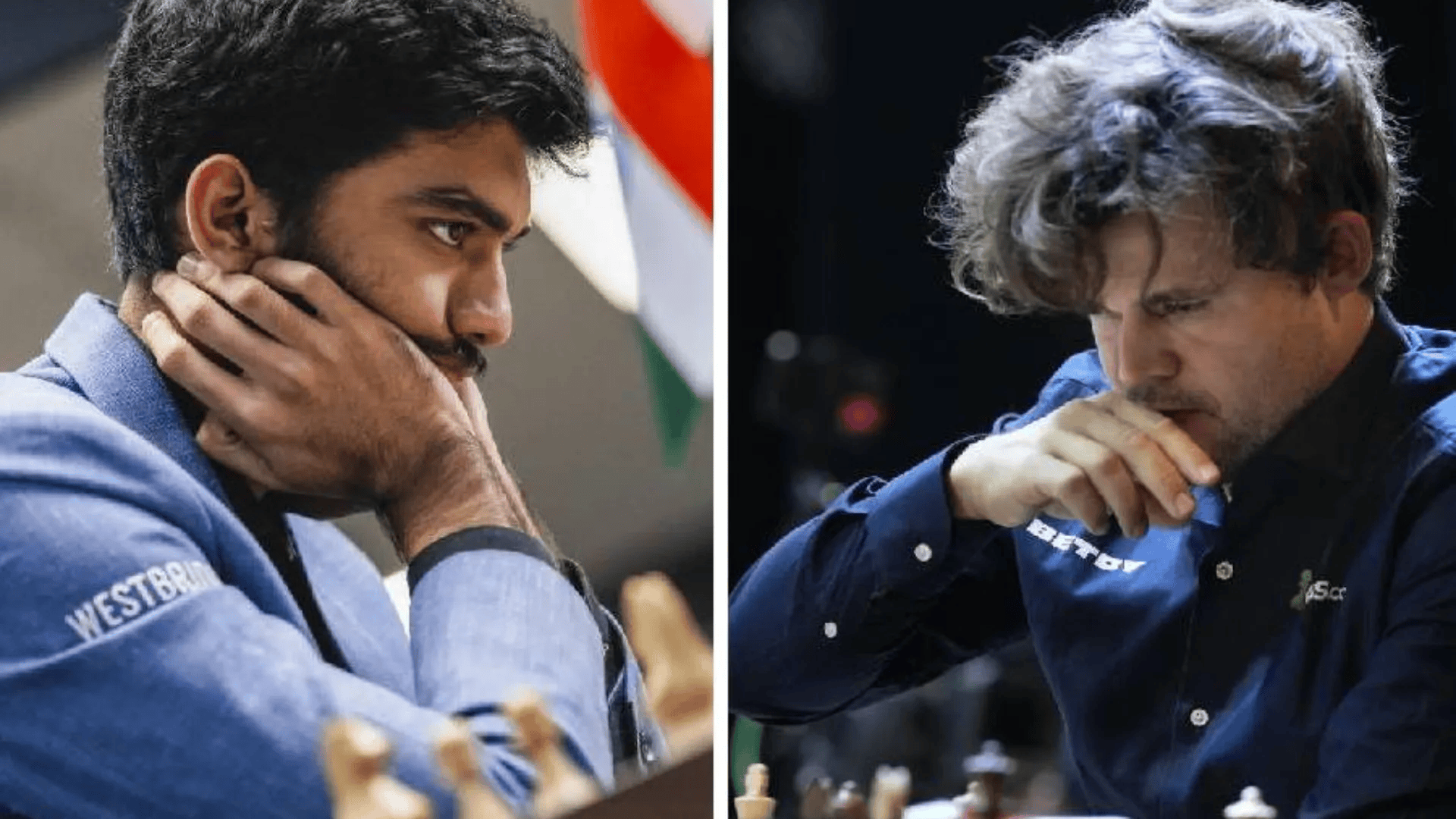
The 13th edition of Norway Chess will witness the first classical encounter between reigning World Champion GM Gukesh Dommaraju and world number-one GM Magnus Carlsen since Gukesh’s historic title victory in Singapore.
Staying true to its traditions, Norway Chess will retain its established format, prize fund, and venue, with eight of the twelve participants from last year returning to compete.

The prestigious tournament will take place in Stavanger, Norway, from May 26 to June 7, featuring a six-player double round-robin classical event. Alongside the main event, the Norway Chess Women tournament will also continue, showcasing six formidable players.
𝐍𝐨𝐫𝐰𝐚𝐲 𝐂𝐡𝐞𝐬𝐬 𝟐𝟎𝟐𝟓: 𝐀 𝐇𝐢𝐠𝐡-𝐒𝐭𝐚𝐤𝐞𝐬 𝐁𝐚𝐭𝐭𝐥𝐞 𝐀𝐰𝐚𝐢𝐭𝐬
The highly anticipated 13th edition of Norway Chess is set to bring an electrifying encounter between World Champion GM Gukesh Dommaraju and World No. 1 GM Magnus Carlsen. This marks their first classical game since Gukesh claimed the world title in Singapore, making it one of the most awaited clashes in modern chess history.

𝐓𝐫𝐚𝐝𝐢𝐭𝐢𝐨𝐧 𝐂𝐨𝐧𝐭𝐢𝐧𝐮𝐞𝐬: Format, Prize Fund & Venue Remain Unchanged
Norway Chess maintains its signature format, prize pool, and venue, with eight of the twelve participants returning from last year. From May 26 to June 7, Stavanger will host a six-player double round-robin classical tournament, ensuring an intense competition among the world’s elite players. Alongside the Open section, the Norway Chess Women event also returns with a strong lineup.

𝐓𝐡𝐞 𝐓𝐢𝐭𝐚𝐧𝐬 𝐀𝐬𝐬𝐞𝐦𝐛𝐥𝐞: 𝐂𝐚𝐫𝐥𝐬𝐞𝐧’𝐬 𝐑𝐚𝐫𝐞 𝐂𝐥𝐚𝐬𝐬𝐢𝐜𝐚𝐥 𝐀𝐩𝐩𝐞𝐚𝐫𝐚𝐧𝐜𝐞
The tournament boasts a powerhouse lineup, featuring six of the world’s top eight players. Among them are six-time Norway Chess champion Carlsen, 2023 winner GM Hikaru Nakamura, and 2018 champion GM Fabiano Caruana.
Making a strong return is World Champion Gukesh, who impressed with a third-place finish in 2023. Indian GM Arjun Erigaisi and China’s GM Wei Yi are set to make their debut in Stavanger, adding fresh excitement to the mix.

𝐀 𝐑𝐞𝐦𝐚𝐭𝐜𝐡 𝐘𝐞𝐚𝐫𝐬 𝐢𝐧 𝐭𝐡𝐞 𝐌𝐚𝐤𝐢𝐧𝐠:
Beyond the star-studded roster, all eyes will be on the long-awaited classical face-off between Carlsen and Gukesh. Their last encounter in the 2023 FIDE World Cup quarterfinal saw Carlsen emerge victorious, eliminating Gukesh with a 1.5-0.5 scoreline. Now, as the reigning world champion, Gukesh is ready to challenge Carlsen’s dominance.
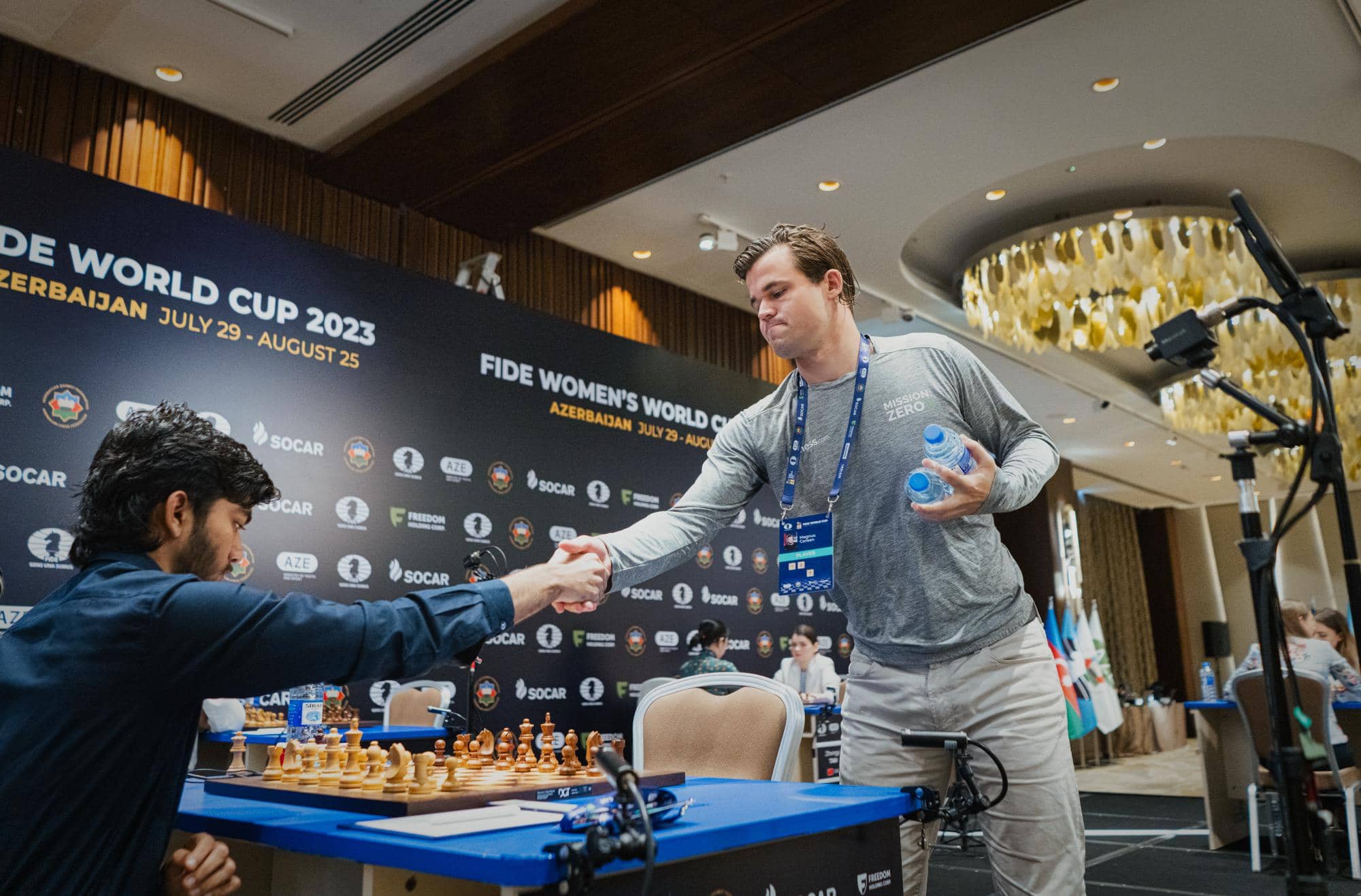
𝐂𝐄𝐎’𝐬 𝐈𝐧𝐬𝐢𝐠𝐡𝐭: 𝐀 𝐏𝐞𝐫𝐟𝐞𝐜𝐭 𝐁𝐥𝐞𝐧𝐝 𝐨𝐟 𝐓𝐚𝐥𝐞𝐧𝐭 𝐚𝐧𝐝 𝐃𝐢𝐯𝐞𝐫𝐬𝐢𝐭𝐲:
Norway Chess CEO Kjell Madland expressed excitement about the tournament’s stellar lineup.
“𝐖𝐞 𝐚𝐫𝐞 𝐞𝐱𝐭𝐫𝐞𝐦𝐞𝐥𝐲 𝐬𝐚𝐭𝐢𝐬𝐟𝐢𝐞𝐝 𝐰𝐢𝐭𝐡 𝐭𝐡𝐞 𝐟𝐢𝐞𝐥𝐝 𝐭𝐡𝐢𝐬 𝐲𝐞𝐚𝐫. 𝐈𝐭’𝐬 𝐚 𝐛𝐥𝐞𝐧𝐝 𝐨𝐟 𝐲𝐨𝐮𝐧𝐠, 𝐝𝐲𝐧𝐚𝐦𝐢𝐜 𝐩𝐥𝐚𝐲𝐞𝐫𝐬 𝐚𝐧𝐝 𝐞𝐬𝐭𝐚𝐛𝐥𝐢𝐬𝐡𝐞𝐝 𝐠𝐫𝐚𝐧𝐝𝐦𝐚𝐬𝐭𝐞𝐫𝐬. 𝐄𝐧𝐬𝐮𝐫𝐢𝐧𝐠 𝐝𝐢𝐯𝐞𝐫𝐬𝐞 𝐫𝐞𝐩𝐫𝐞𝐬𝐞𝐧𝐭𝐚𝐭𝐢𝐨𝐧 𝐟𝐫𝐨𝐦 𝐈𝐧𝐝𝐢𝐚, 𝐂𝐡𝐢𝐧𝐚, 𝐚𝐧𝐝 𝐭𝐡𝐞 𝐔.𝐒.𝐀. 𝐰𝐚𝐬 𝐚 𝐤𝐞𝐲 𝐩𝐫𝐢𝐨𝐫𝐢𝐭𝐲 𝐟𝐨𝐫 𝐮𝐬. 𝐓𝐡𝐢𝐬 𝐞𝐯𝐞𝐧𝐭 𝐰𝐢𝐥𝐥 𝐛𝐞 𝐚 𝐬𝐩𝐞𝐜𝐭𝐚𝐜𝐥𝐞.”
𝐂𝐚𝐫𝐥𝐬𝐞𝐧’𝐬 𝐒𝐡𝐢𝐟𝐭𝐢𝐧𝐠 𝐅𝐨𝐜𝐮𝐬: 𝐀 𝐑𝐚𝐫𝐞 𝐂𝐥𝐚𝐬𝐬𝐢𝐜𝐚𝐥 𝐀𝐩𝐩𝐞𝐚𝐫𝐚𝐧𝐜𝐞
Fans will cherish the opportunity to see Carlsen in a classical tournament, as his participation in this format has significantly decreased. In 2024, he played only 18 classical games—the lowest in his career. With his attention shifting towards freestyle formats and rapid events like the Freestyle Chess Grand Slam and Esports World Cup, Norway Chess might be his only classical event of 2025.
Despite this shift, the tournament organizers remain optimistic about his future involvement.
“𝐌𝐚𝐠𝐧𝐮𝐬 𝐡𝐚𝐬 𝐚𝐥𝐰𝐚𝐲𝐬 𝐞𝐧𝐣𝐨𝐲𝐞𝐝 𝐩𝐥𝐚𝐲𝐢𝐧𝐠 𝐡𝐞𝐫𝐞, 𝐚𝐧𝐝 𝐰𝐞 𝐡𝐚𝐯𝐞 𝐚 𝐠𝐫𝐞𝐚𝐭 𝐫𝐞𝐥𝐚𝐭𝐢𝐨𝐧𝐬𝐡𝐢𝐩 𝐰𝐢𝐭𝐡 𝐡𝐢𝐦. 𝐖𝐞 𝐞𝐱𝐩𝐞𝐜𝐭 𝐡𝐢𝐦 𝐭𝐨 𝐫𝐞𝐭𝐮𝐫𝐧 𝐢𝐧 𝐭𝐡𝐞 𝐜𝐨𝐦𝐢𝐧𝐠 𝐲𝐞𝐚𝐫𝐬,”
Madland confirmed.
𝐊𝐞𝐞𝐩𝐢𝐧𝐠 𝐭𝐡𝐞 𝐂𝐥𝐚𝐬𝐬𝐢𝐜𝐚𝐥 𝐓𝐫𝐚𝐝𝐢𝐭𝐢𝐨𝐧 𝐀𝐥𝐢𝐯𝐞
Norway Chess remains committed to preserving classical chess as its core format. While armageddon tiebreakers will still be in place, the primary focus is on long-form battles.
“𝐏𝐥𝐚𝐲𝐞𝐫𝐬 𝐡𝐚𝐯𝐞 𝐯𝐨𝐢𝐜𝐞𝐝 𝐭𝐡𝐚𝐭 𝐜𝐥𝐚𝐬𝐬𝐢𝐜𝐚𝐥 𝐭𝐨𝐮𝐫𝐧𝐚𝐦𝐞𝐧𝐭𝐬 𝐚𝐫𝐞 𝐛𝐞𝐜𝐨𝐦𝐢𝐧𝐠 𝐫𝐚𝐫𝐞. 𝐖𝐞 𝐰𝐚𝐧𝐭 𝐭𝐨 𝐮𝐩𝐡𝐨𝐥𝐝 𝐭𝐫𝐚𝐝𝐢𝐭𝐢𝐨𝐧 𝐰𝐡𝐢𝐥𝐞 𝐤𝐞𝐞𝐩𝐢𝐧𝐠 𝐢𝐭 𝐞𝐧𝐠𝐚𝐠𝐢𝐧𝐠,” Madland emphasized.
𝐖𝐨𝐦𝐞𝐧’𝐬 𝐍𝐨𝐫𝐰𝐚𝐲 𝐂𝐡𝐞𝐬𝐬: 𝐀 𝐂𝐨𝐦𝐦𝐢𝐭𝐦𝐞𝐧𝐭 𝐭𝐨 𝐄𝐪𝐮𝐚𝐥𝐢𝐭𝐲
Continuing its groundbreaking initiative, Norway Chess Women returns with an equal prize fund, reinforcing its dedication to gender parity.
Defending champion and Women’s World Champion GM Ju Wenjun leads the pack, followed by GM Lei Tingjie, GM Koneru Humpy, and GM Anna Muzychuk. New to the roster is IM Sara Khadem, replacing GM Pia Cramling.
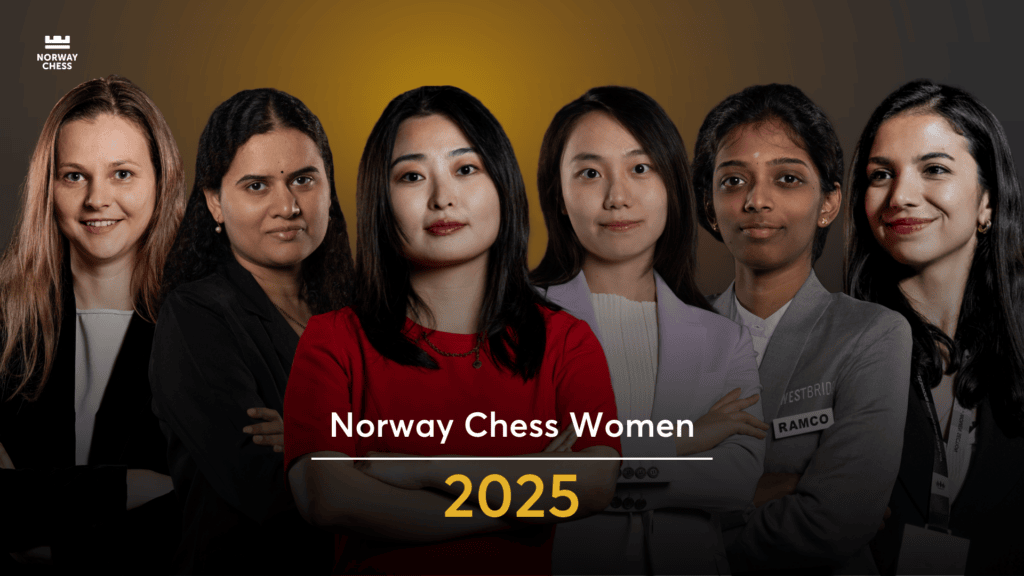
𝐆𝐞𝐧𝐞𝐫𝐚𝐥 𝐌𝐚𝐧𝐚𝐠𝐞𝐫 𝐁𝐞𝐧𝐞𝐝𝐢𝐜𝐭𝐞 𝐖𝐞𝐬𝐭𝐫𝐞 𝐒𝐤𝐨𝐠 𝐬𝐭𝐫𝐞𝐬𝐬𝐞𝐝 𝐭𝐡𝐞 𝐢𝐦𝐩𝐨𝐫𝐭𝐚𝐧𝐜𝐞 𝐨𝐟 𝐜𝐨𝐧𝐭𝐢𝐧𝐮𝐢𝐭𝐲:
“𝐓𝐡𝐢𝐬 𝐰𝐚𝐬𝐧’𝐭 𝐦𝐞𝐚𝐧𝐭 𝐭𝐨 𝐛𝐞 𝐚 𝐨𝐧𝐞-𝐭𝐢𝐦𝐞 𝐚𝐜𝐡𝐢𝐞𝐯𝐞𝐦𝐞𝐧𝐭. 𝐄𝐧𝐬𝐮𝐫𝐢𝐧𝐠 𝐞𝐪𝐮𝐚𝐥 𝐨𝐩𝐩𝐨𝐫𝐭𝐮𝐧𝐢𝐭𝐢𝐞𝐬 𝐲𝐞𝐚𝐫 𝐚𝐟𝐭𝐞𝐫 𝐲𝐞𝐚𝐫 𝐬𝐨𝐥𝐢𝐝𝐢𝐟𝐢𝐞𝐬 𝐨𝐮𝐫 𝐜𝐨𝐦𝐦𝐢𝐭𝐦𝐞𝐧𝐭 𝐭𝐨 𝐰𝐨𝐦𝐞𝐧’𝐬 𝐜𝐡𝐞𝐬𝐬.”
Madland added:
“𝐓𝐡𝐢𝐬 𝐢𝐧𝐢𝐭𝐢𝐚𝐭𝐢𝐯𝐞 𝐢𝐬𝐧’𝐭 𝐣𝐮𝐬𝐭 𝐚𝐛𝐨𝐮𝐭 𝐰𝐨𝐦𝐞𝐧 𝐢𝐧 𝐜𝐡𝐞𝐬𝐬—𝐢𝐭’𝐬 𝐚𝐛𝐨𝐮𝐭 𝐭𝐡𝐞 𝐟𝐮𝐭𝐮𝐫𝐞 𝐨𝐟 𝐭𝐡𝐞 𝐬𝐩𝐨𝐫𝐭 𝐚𝐬 𝐚 𝐰𝐡𝐨𝐥𝐞.”
𝐓𝐨𝐮𝐫𝐧𝐚𝐦𝐞𝐧𝐭 𝐒𝐭𝐫𝐮𝐜𝐭𝐮𝐫𝐞 & 𝐏𝐫𝐢𝐳𝐞 𝐅𝐮𝐧𝐝
The 2025 Norway Chess tournament will follow a double round-robin format, where each player faces every opponent twice.
𝐊𝐞𝐲 𝐃𝐞𝐭𝐚𝐢𝐥𝐬:
Time Control: 120 minutes for 40 moves, with a 10-second increment from move 41.
𝐒𝐜𝐨𝐫𝐢𝐧𝐠 𝐒𝐲𝐬𝐭𝐞𝐦:
Classical win:𝟑 𝐩𝐨𝐢𝐧𝐭𝐬
Classical loss: 𝟎 𝐩𝐨𝐢𝐧𝐭𝐬
Draw: 𝟏 𝐩𝐨𝐢𝐧𝐭 𝐞𝐚𝐜𝐡, 𝐰𝐢𝐭𝐡 𝐚𝐧 𝐚𝐝𝐝𝐢𝐭𝐢𝐨𝐧𝐚𝐥 𝐚𝐫𝐦𝐚𝐠𝐞𝐝𝐝𝐨𝐧 𝐛𝐚𝐭𝐭𝐥𝐞 𝐟𝐨𝐫 𝟎.𝟓 𝐛𝐨𝐧𝐮𝐬 𝐩𝐨𝐢𝐧𝐭𝐬.
𝐏𝐫𝐢𝐳𝐞 𝐅𝐮𝐧𝐝: 💰
Total Prize Pool (Each Event): 𝟏,𝟔𝟗𝟎,𝟎𝟎𝟎 𝐍𝐎𝐊 (~$𝟏𝟓𝟎,𝟎𝟎𝟎)
Winner’s Prize: 𝟕𝟎𝟎,𝟎𝟎𝟎 𝐍𝐎𝐊 (~$𝟔𝟏,𝟎𝟎𝟎)
Additionally, an open Swiss tournament will run parallel to the main event, providing a platform for emerging players.
𝐀 𝐂𝐡𝐞𝐬𝐬 𝐅𝐞𝐬𝐭𝐢𝐯𝐚𝐥 𝐋𝐢𝐤𝐞 𝐍𝐨 𝐎𝐭𝐡𝐞𝐫
With its iconic matchups, elite participation, and unwavering commitment to classical chess, Norway Chess 2025 promises to be a grand spectacle. As Carlsen and Gukesh prepare to battle in their first classical showdown, chess fans worldwide are in for an unforgettable tournament.
Stay tuned as Stavanger transforms into the ultimate battleground for chess supremacy!

Ready to Elevate Your Chess Skills?
Join the Madras School of Chess, where champions are made! Whether you’re a beginner or an advanced player, our expert coaching will help you master the game.
📍 Locations: T.Nagar, Anna Nagar, Mandaveli & Online
📞 Call: +91 98404 03376
🌐 Visit: www.madrasschoolofchess.com
Start your journey to chess mastery today! ♟️🚀
© 2024 The Madras School of Chess
Created by Webdzo